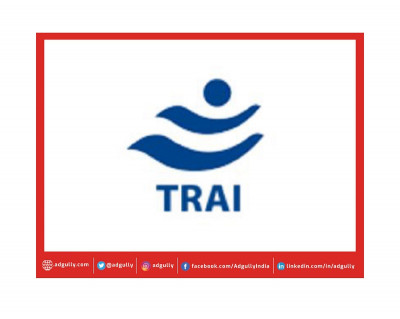NTO 2.0: Digital Cable Federation seeks capping of channel price
All India Digital Cable Federation (AIDCF) has alleged that broadcasters are controlling the MRP of the channels. According to the AIDCF, the broadcasters’ response to the conditions imposed by the TRAI on the formulation of bouquet has been to overprice a channel out of the bouquet, knowing well that the consumer that is already accustomed to particular content will subscribe that channel. These are among the slew of comments the federation has made to the TRAI in response to the consultation paper on the NTO 2.0.
Click here to attend IMAGEXX 2022
Therefore, said the cable federation in its letter, to truly protect consumer choice, it is important to ensure a capping of price of any TV channel so that the popular channels remain within the affordable range for consumers who wish to access them. The change in the market place is that the broadcasters are no longer directly concerned with the loss in subscribership in the cable TV platforms so long as they can capture the customer in the alternative OTT platform services that they are providing directly.
The MSO industry is witnessing churn of 2.5% per month, and any increase in price will lead to the annihilation of the industry, said the federation.
Other points made in the letter
The question of homogeneity of the bouquet will become less important if the TRAI accepts the recommendation to cap MRP of channels at Rs 12 per channel, which is the need of the hour for protecting the broadcasting and cable TV industry in India.
There should be ceiling on the discount on sum of a-la-carte prices of channels forming part of bouquets while fixing MRP of bouquets by broadcasters so that unwanted channels are not pushed to subscribers, increasing the cost to subscribers. There should be linkage of bouquet price and sum of a-la-carte price so that the pricing is not skewed in favour of bouquets.
The clause 3(b)(a) regulation “The Telecommunication (Broadcasting and Cable) Services (Eighth) (Addressable Systems) Tariff (Second Amendment) Order, 2020”, dated January 1, 2020 is already having the following condition to ensure that the prices of the à la carte Channels have a direct-correlation with the price of the Bouquets being offered by the Broadcasters, that is, Clause 3(b)(a) – the sum of maximum retail prices per month of the a-la-carte pay channels forming part of a bouquet shall in no case exceed one and half times of the maximum retail price per month of such bouquet; In addition to above, following conditions shall be added to the above condition.
The maximum retail price per month of anyone à-la carte pay channel forming part of such a bouquet, shall in no case exceed three times the average maximum price per month of a pay channel of that bouquet but more importantly homogeneity in content – considering the India’s social, cultural and demographic diversity. The channel carrying the popular content like a TV show or a particular sports programme will drive the consumer selection.
As per AIDCF, twin conditions methodology prescribed in current regulation is sufficient to define the relationship between pricing of a la carte and bouquet price of channel. Further, homogeneity in content will help in curtailing skewed bouquet pricing vs a-la carte pricing.
There should also be cap on inclusion of any single channel in the bouquets offered by the broadcasters. Any single channel shall not be part of more than 10 bouquets offered by the broadcasters.
The 15% incentive being provided by the broadcasters to MSOs is linked to penetration of the channel or bouquet in the DPO’s customer base, is itself contrary to the mandate provided by the regulation, which envisages consumer choice as first and foremost paramount interest of the New Tariff Order (NTO). This is forcing MSOs to push the channel of the broadcaster.
It, therefore, suggested that the distribution fee on both a-la-carte as well as bouquet offerings by the broadcasters should be made flat at 35% of MRP, to curb anti-regulatory activities by the broadcasters. This will ensure that the DPOs are not arm-twisted to meet unreasonable penetration targets set by the broadcaster.
It should also be made mandatory that all the broadcasters who sign interconnect agreement with DPOs should also mandatorily sign the carriage RIO of DPO.
The AIDCF further stated that it had already stated that on parity, a maximum discount 33% should also be made available to both the broadcasters as well as DPOs, on their bouquet offerings.
While AIDCF has number of matters of concern pertaining to NTO 2.0 and the existing regulatory framework, however given the issues raised in the Consultation Paper, the AIDCF would like to highlight presently the following additional points:
- Genre wise Capping on MRP of Pay channels including a maximum cap of Rs 12 for any pay channel (Irrespective of Genre)
- Incentive of 15% may be combined with distribution fee and make it 35% of the MRP to be given to DPOs for both a la carte channels and bouquets.
- DPOs should have freedom to choose channels from Broadcasters bouquet which was prevalent before NTO -1
- Linear channels shall be offered to OTT subscribers at MRP declared in RIO of addressable platform
The 60% discount on Multi TV from second TV onwards, which has been mandated by TRAI on DPOs, shall also be extended to Broadcasters. It is very much logical that for each subscriber and its choices of channel, the price is being paid by DPOs to broadcasters, as it’s a part of business value chain, and therefore, if any discount is mandated to be given by DPOs on Multi TV to subscribers, than that same shall be extended by the Broadcasters to DPOs. The AIDCF had also submitted its detailed logic in its earlier letters dated 2nd November 2, 2021 and January 18, 2022.





Share
Facebook
YouTube
Tweet
Twitter
LinkedIn